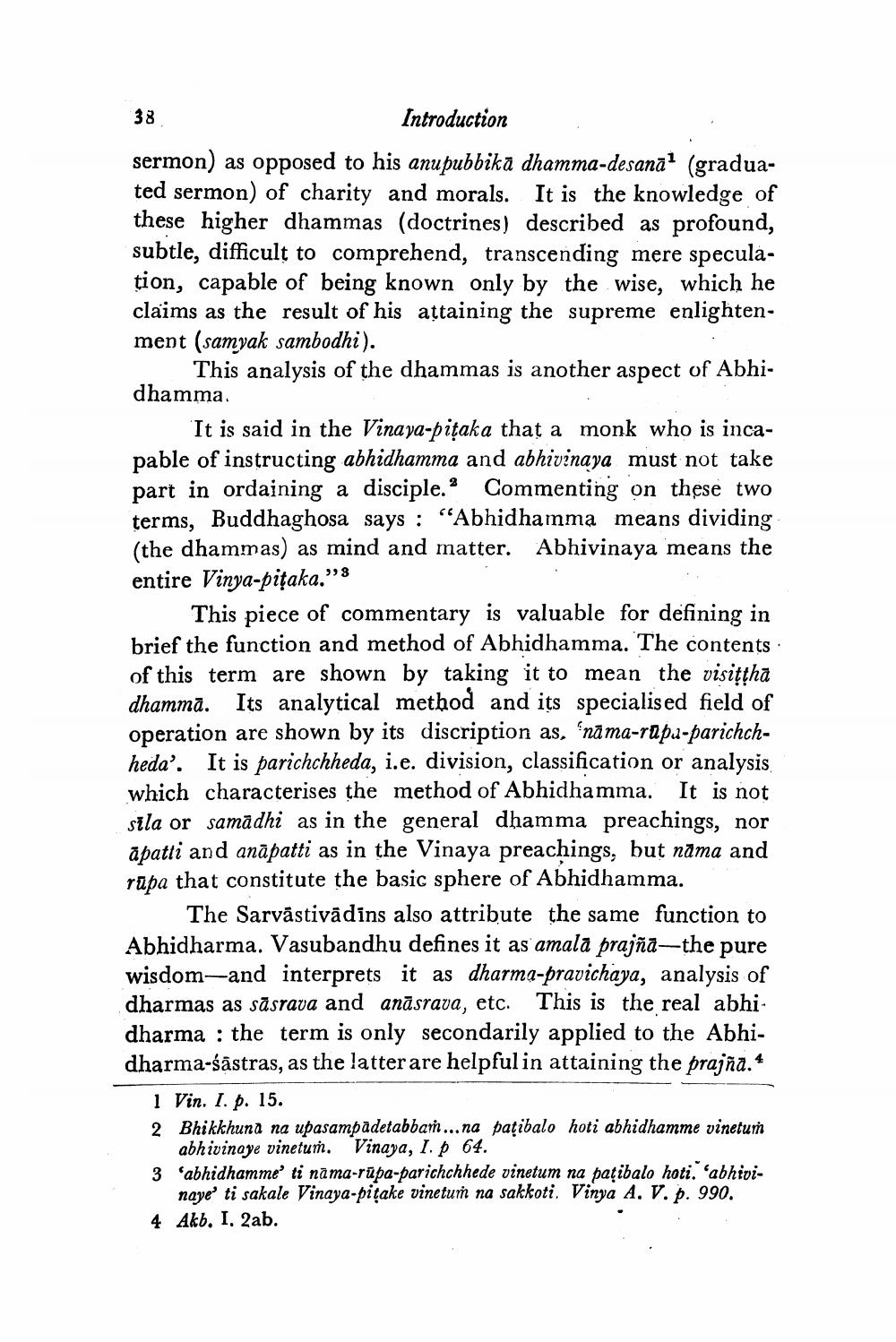________________ 38 Introduction sermon) as opposed to his anupubbika dhamma-desana? (graduated sermon) of charity and morals. It is the knowledge of these higher dhammas (doctrines) described as profound, subtle, difficult to comprehend, transcending mere speculation, capable of being known only by the wise, which he claims as the result of his attaining the supreme enlightenment (samyak sambodhi). This analysis of the dhammas is another aspect of Abhidhamma. It is said in the Vinaya-pitaka that a monk who is incapable of instructing abhidhamma and abhivinaya must not take part in ordaining a disciple. % Commenting on these two terms, Buddhaghosa says : "Abhidhamma means dividing (the dhammas) as mind and matter. Abhivinaya means the entire Vinya-pitaka." This piece of commentary is valuable for defining in brief the function and method of Abhidhamma. The contents of this term are shown by taking it to mean the visittha dhamma. Its analytical method and its specialised field of operation are shown by its discription as, 'nama-rapu-parichchheda'. It is parichchheda, i.e. division, classification or analysis which characterises the method of Abhidhamma. It is not sila or samadhi as in the general dhamma preachings, nor apatti and anapatti as in the Vinaya preachings, but nama and rapa that constitute the basic sphere of Abhidhamma. The Sarvastivadins also attribute the same function to Abhidharma. Vasubandhu defines it as amala prajna--the pure wisdom--and interprets it as dharma-pravichaya, analysis of dharmas as sasrava and anasrava, etc. This is the real abhidharma : the term is only secondarily applied to the Abhidharma-sastras, as the latter are helpful in attaining the prajna. 4 1 Vin. I. p. 15. 2 Bhikkhuna na upasampadetabbam...na patibalo hoti abhidhamme vinetu abhivinaye vinetum. Vinaya, I. p 64. 3 'abhidhamme' ti nama-rupa-parichchhede vinetum na patibalo hoti. abhivi naye' ti sakale Vinaya-pitake vinetum na sakkoti. Vinya A. V. p. 990. 4 Akb. I. 2ab.




